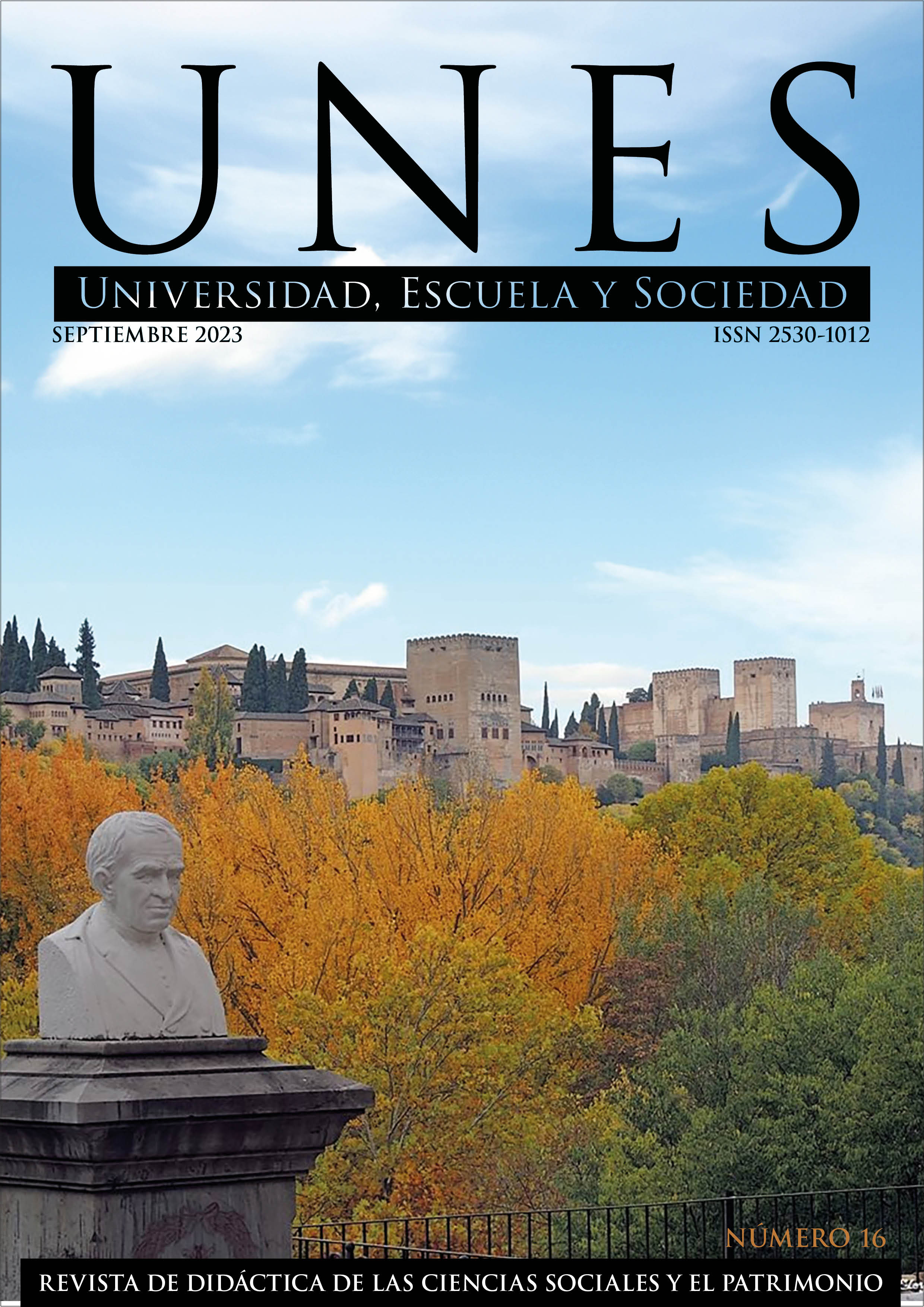The schools of the Ave Maria of Arnao. Didactic reflections
DOI:
https://doi.org/10.30827/unes.i16.28609Keywords:
School, Arnao, Ave Maria, Manjón, didactics, methodologyAbstract
Introduction: This year 2023 marks one hundred and ten years since the inauguration of the “Escuelas del Ave María de Arnao” (Ave María de Arnao Schools), founded by the “Real Compañía Asturiana de Minas” (Real Asturian Society of Mining). They were inaugurated on the day of July 3, 1913. This center responds to the type of schools that, in the social context of Asturias at the beginning of the 20th century, were promoted in the form of paternalism and philanthropy from the business sector.
Method: By reviewing the set of preserved primary and secondary sources this article analyzes the foundation and historical evolution of the Ave María de Arnao School, perhaps the most significant within the set of manjonian schools existing in Asturias since the beginning of the 20th century, according to the considered hypothesis. Based on the available documentary sources and establishing the state of the question, a descriptive study of the didactic and educational model developed in this educational center which always maintained a close relationship with D. Andrés Manjón, mentor of the Avemarian schools of Granada, is carried out in 1889.
Results: Framed the extensive relationship of Avemarian schools in Asturias in the educational project of the professor of the University of Granada Andrés Manjón, the research focuses, due to reasons of opportunity and space, on the analysis of the Arnao school. The results obtained allow us to develop a descriptive and evaluative study, of a qualitative nature, focused on four categories: circumstances that explain the creation and historical evolution of this center, description of its location and facilities, and analysis of the methodology and didactic resources used.
Conclusions: A synthesis of the results that confirms the initial consequently formulated hypothesis is offered: The Ave María de Arnao School constitutes a truly original educative and didactic initiative that, as a concrete application and adaptation of the educational thinking of A. Manjón, contributes to the improvement of the Asturian school, especially among the sons and daughters of the working class.
Downloads
References
Archivo Municipal del Ayuntamiento de Castrillón. Serie “Escuelas concejo”. Legajo s/n.
Alcántara, P. (1902). Educación intuitiva, lecciones de cosas y excursiones escolares. Librería de Perlado, Páez y Cª.
Bermejo, C. (2000). Historia de la Fundación Benéfico Docente “Escuelas Selgas”. Fundación Selgas Fagalde. Gráficas Rigel.
Caballero, B. (1970). Cincuenta años de magisterio. Gráficas Summa.
Canella, F. (1905). Anales de la Universidad de Oviedo (1903-1905). Tomo III. (pp. 263-289). Adolfo Brid.
Cardedera, M. (1881). Principios de educación y métodos de enseñanza. Libro de texto para las escuelas normales, 6ª Ed. Imprenta de D. Gregorio Hernando.
Cidad, J. (2001). Memoria de las Escuelas del Ave María en Sargentes (Burgos).1893-1898. 4ª edición. Santos. S.L.
García, M.E. (2004). Las Escuelas del Ave María de Arnao. Patronato Municipal de Cultura.
Manjon A. (1909). Hojas catequistas y pedagógicas del Ave María. Gráficas Nebrija.192 pp.
Manjón, A. (1915). Hojas históricas del Ave María. Escuelas Ave María [Edición facsímil de J. Cidad en 2021].
Memoria de las Escuelas del Ave María de Arnao (1914). Archivo Real Compañía Asturiana de Minas
Montero, J. (1999). Las visitas a las Escuelas del Ave María, en tiempos de D. Andrés Manjón. Escuelas Ave María.
Palma, A. (2005). Avemarianos. Identidad y memori. Imprenta Editorial Ave María.
Prellezo, J. M. (2003). Diario del P. Manjón 1985-1905. Edición crítica de Prellezo y Prólogo de Luis Sánchez Agesta. BAC.
Downloads
Published
How to Cite
Issue
Section
License
Copyright (c) 2023 María Esther García López

This work is licensed under a Creative Commons Attribution-NonCommercial-ShareAlike 4.0 International License.
Authors being published in this journal agree to the following terms:
The authors retain their copyrights but guarantee the journal's right to be the first publisher of the work, licensed under a Creative Commons Attribution-NonCommercial-ShareAlike 4.0 International license, which allows others to share the work, provided that they acknowledge its authorship and initial publication in this journal.
Authors may separately subscribe additional agreements for the non-exclusive distribution of the work published in the journal (for example, including it in an institutional repository or publishing it in a book), with recognition of its initial publication in this journal.
Authors are allowed and encouraged to disseminate their work electronically (for example, in institutional repositories or on their own websites) before and during the submission process, as this may result in productive exchanges, as well as more and earlier citations of the works to be published (See The Effect of Open Access) (in English).






 ISSN-e: 2530-1012
ISSN-e: 2530-1012









